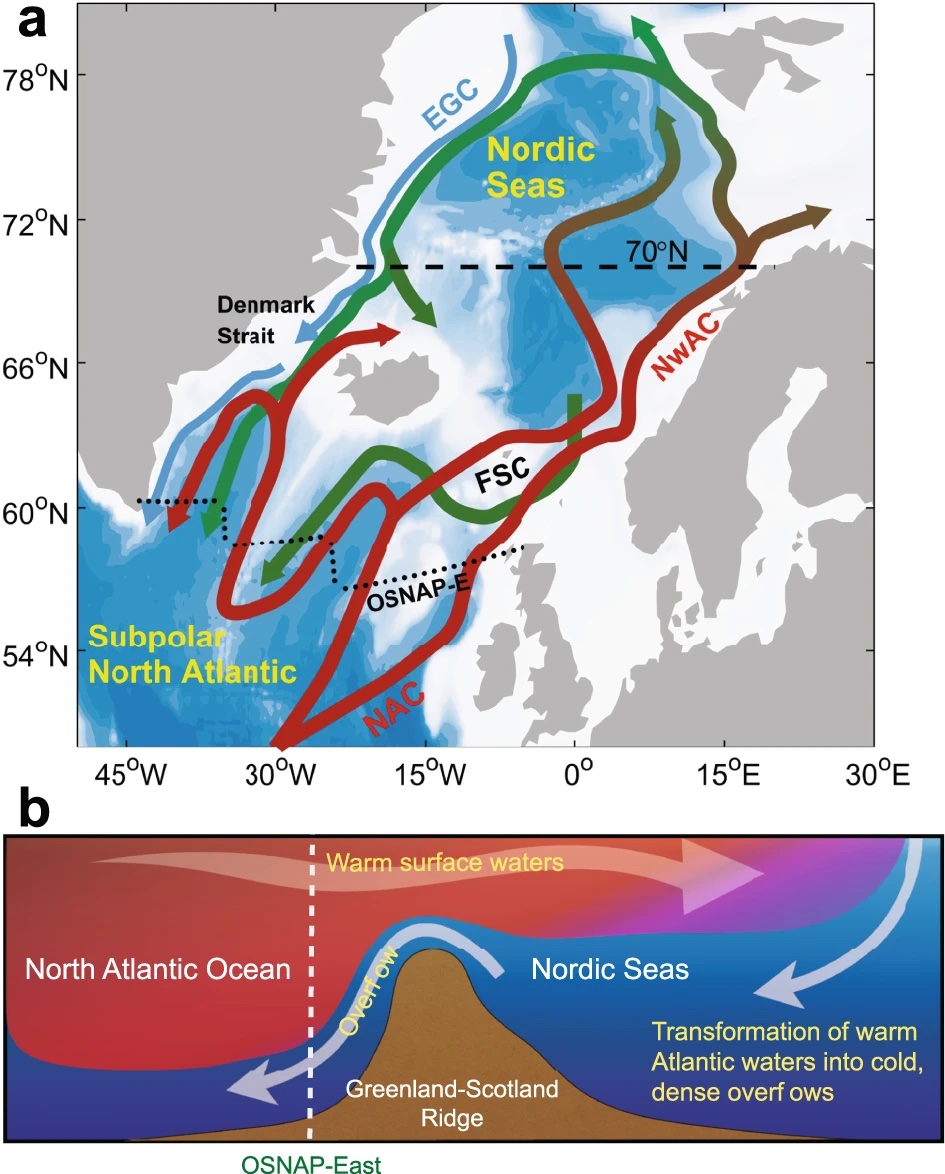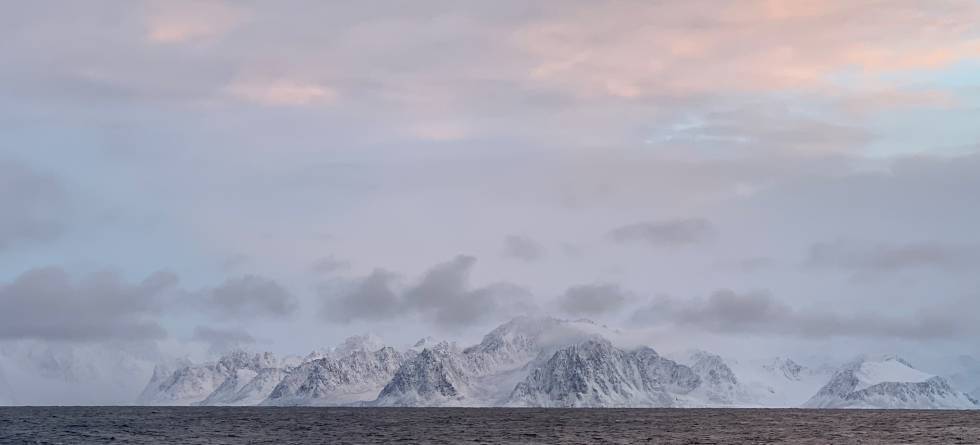The Atlantic meridional overturning circulation (AMOC) carries warm and saline waters northwards near the surface and cold, dense waters southwards at depth. The AMOC is an important part of the global climate system, impacting both sea level along the Atlantic coastlines, and temperature and precipitation over surrounding continents.

Climate models used by the IPCC all agree that the AMOC will weaken under global warming. As the air gets warmer, the transformation of light-to-dense waters in the North Atlantic becomes less efficient, hence weakening the AMOC. The AMOC has also been identified as a potential tipping point in the climate system, meaning that a weakening beyond a certain unknown threshold could result in abrupt change.
How much the AMOC will weaken is, however, uncertain. The new paper by Årthun and colleagues shows that the Nordic Seas could play an important role. The Nordic Seas, located between the North Atlantic and the Arctic, is one of the regions that produces the cold, dense waters that form the lower limb of the AMOC. The study finds that the projected overturning circulation increases between 2040 and 2100. This happens as a result of large scale changes in hydrography that translate into changes in ocean circulation and dense-water formation.
By comparing different climate models and ensemble members, the study shows that the future AMOC weakening depends on what happens in the Nordic Seas. Models with a stronger strengthening of the Nordic Seas overturning circulation, showed a weaker weakening of the AMOC in the subpolar North Atlantic. The Nordic Seas could therefore be key to the future state of the AMOC.
Reference
Årthun, M., Asbjørnsen, H., Chafik, L., Johnson, H.L., Våge, K. Future strengthening of the Nordic Seas overturning circulation. Nature Communications 14, 2065 (2023). https://doi.org/10.1038/s41467-023-37846-6

